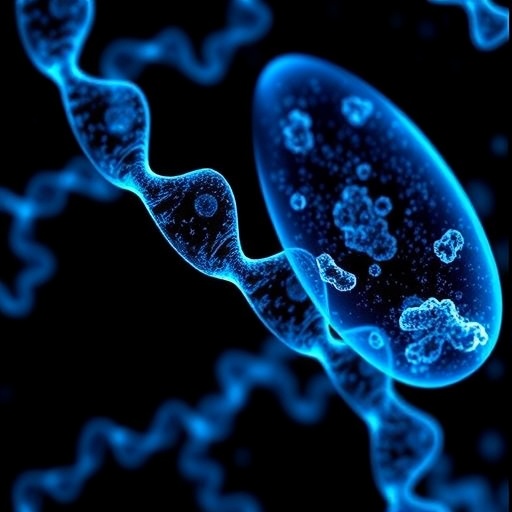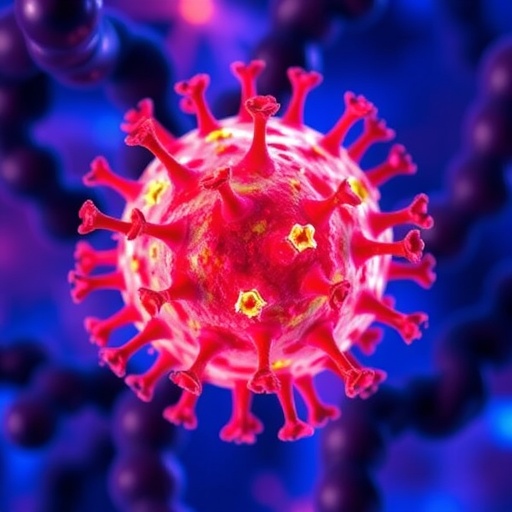In the rapidly evolving field of transplantation medicine, one of the most daunting challenges remains the early and precise diagnosis of allograft injury. A groundbreaking study published in Nature Communications by McNamara, Jain, Oza, and colleagues offers a remarkable leap forward in this domain, unveiling how circulating cell-free DNA (cfDNA) methylation patterns can serve as a window into the cellular origins of allograft damage following liver transplantation. This pioneering research not only advances our molecular understanding of transplant rejection but also paves the way for noninvasive, highly specific monitoring tools that could dramatically improve patient outcomes and graft survival rates.
Liver transplantation is a life-saving intervention for patients with end-stage liver diseases, but post-transplant injury and rejection significantly impede long-term success. Traditional methods for detecting allograft injury typically involve invasive biopsies, which carry risks and often lack sensitivity or fail to reveal the full complexity of cellular insults occurring within the transplanted organ. The new study breaks through these limitations by focusing on cfDNA, fragments of DNA freely circulating in the bloodstream, originating from dying or stressed cells. These cfDNA fragments carry epigenetic marks—specifically, DNA methylation signatures—that are tissue- and cell type-specific, reflecting the identity of the cells from which they were shed.
By leveraging advanced sequencing technologies alongside sophisticated computational algorithms, the research team meticulously delineated the methylation landscapes of cfDNA in patients post-liver transplant. Their approach allowed them to map the cellular injury back to its precise origin within the graft—whether hepatocytes, biliary epithelial cells, endothelial cells, or immune infiltrates—thereby providing an unprecedented resolution in monitoring allograft health. This precision is critical because different cell populations contribute distinctively to various forms of transplant injury, including ischemia-reperfusion injury, immune-mediated rejection, and drug toxicity.
.adsslot_5yAKPkuB9L{ width:728px !important; height:90px !important; }
@media (max-width:1199px) { .adsslot_5yAKPkuB9L{ width:468px !important; height:60px !important; } }
@media (max-width:767px) { .adsslot_5yAKPkuB9L{ width:320px !important; height:50px !important; } }
ADVERTISEMENT
The study’s methodology rested on the creation of comprehensive reference methylomes: detailed catalogs of methylation patterns characteristic of each relevant liver cell type. When matching the cfDNA methylation data from transplant recipients against these reference maps, the team observed distinct signatures corresponding with active injury. For example, spikes in hepatocyte-derived cfDNA methylation signatures correlated strongly with the classical histopathological signs of hepatocyte injury, while elevated endothelial cell cfDNA methylation indicated vascular inflammation and damage. This refined cellular source identification is a considerable improvement over the nonspecific nature of conventional cfDNA quantification, which merely tracks overall cfDNA levels often confounded by background systemic factors.
What makes this approach truly transformative is its noninvasive nature combined with high specificity and the potential for real-time monitoring. Where biopsies are limited by sampling error and patient risk, cfDNA methylation profiling can be conducted through a simple blood draw. This could enable clinicians to track graft health continuously and initiate tailored therapeutic interventions even before clinical symptoms manifest or irreversible damage occurs. Early detection is particularly important in liver transplant recipients, where delayed diagnosis of rejection or drug-induced injury frequently results in graft loss or the need for retransplantation.
Furthermore, the research revealed intriguing temporal patterns of cfDNA methylation changes following transplantation. Immediately post-surgery, an expected surge of cfDNA from multiple cell types reflected surgical trauma and ischemia-reperfusion injury. However, longitudinal tracking demonstrated that aberrant elevations in specific cellular cfDNA methylation signatures could predict subsequent episodes of acute rejection, outperforming standard biomarker assays in sensitivity and predictive value. This temporal resolution may ultimately lead to personalized immunosuppressive regimens calibrated to the molecular fingerprint of injury, rather than relying on uniform protocols that may over- or under-treat individual patients.
Another significant insight from the study pertains to the involvement of nonparenchymal cell types in allograft injury. The detection of methylation markers characteristic of immune cells and endothelial cells underscored the complex interplay of innate and adaptive immune mechanisms in transplant rejection. These findings align with the growing recognition of microvascular inflammation and endothelial dysfunction as early drivers of graft pathology. By capturing such nuanced cellular events, cfDNA methylome analysis offers a comprehensive snapshot of the immunopathology unfolding within the graft microenvironment.
The implications of this research extend beyond liver transplantation. Since DNA methylation is a universal epigenetic modification with tissue-specific patterns, the conceptual framework and analytic pipeline developed here could be adapted to monitor allograft injuries in kidney, heart, lung, and other solid organ transplants. Moreover, cfDNA methylation profiling has potential applications in autoimmune diseases, cancer diagnostics, and monitoring of other conditions characterized by tissue injury and cellular turnover, making it a versatile tool in precision medicine.
Technical challenges remain to be addressed before clinical implementation, including standardization of sampling protocols, validation in larger and more diverse patient cohorts, and integration with existing diagnostic workflows. However, the robust proof-of-concept established by McNamara et al. sets the stage for rapid translational advances. The scalability of sequencing technologies and decreasing costs of epigenetic assays further bolster the feasibility of deploying this approach widely in clinical transplant centers.
The study also raises intriguing questions about the fundamental biology of cfDNA release and clearance. Elucidating how different injury mechanisms influence cfDNA methylation patterns could deepen our grasp of cell death modalities and immune responses post-transplant, potentially uncovering biomarkers not only for injury but also for tolerance and repair.
In essence, this research elevates cfDNA methylation from a promising biomarker to a powerful molecular atlas of graft pathology. Its deployment could transform post-transplant care from reactive to proactive, enabling clinicians to preempt rejection episodes and tailor treatments with unprecedented precision. As graft survival rates improve, the quality of life and long-term health of transplant recipients stand to benefit immensely.
Importantly, the open-access nature of this study facilitates swift dissemination and replication of findings across global transplant centers, fostering collaborative refinement and validation. The integration of computational biology with clinical transplantation exemplifies the multidisciplinary innovation required to tackle complex medical challenges.
As we stand on the cusp of this new era in transplant diagnostics, the potential ripple effects across medicine are profound. The convergence of epigenetics and liquid biopsy technologies promises to reshape how we perceive and manage organ transplantation, with cfDNA methylation profiling illuminating the cellular crosstalk that dictates graft fate.
This landmark study by McNamara and colleagues heralds a future where a simple blood test could replace invasive biopsies, delivering rich molecular insights to guide personalized interventions. Such advances embody the promise of precision medicine, heralding improved longevity and well-being for transplant recipients worldwide.
Subject of Research: Cellular sources of allograft injury after liver transplant identified via circulating cell-free DNA methylation patterns.
Article Title: Circulating cell-free DNA methylation patterns indicate cellular sources of allograft injury after liver transplant.
Article References:
McNamara, M.E., Jain, S.S., Oza, K. et al. Circulating cell-free DNA methylation patterns indicate cellular sources of allograft injury after liver transplant. Nat Commun 16, 5310 (2025). https://doi.org/10.1038/s41467-025-60507-9
Image Credits: AI Generated
Tags: allograft rejection mechanismscirculating cell-free DNADNA methylation patternsepigenetic marks in transplantationinvasive biopsy alternativesliver transplant injury diagnosisliver transplantation success factorsmolecular understanding of graft damagenoninvasive transplant monitoringpatient outcomes in liver transplantationpost-transplant complicationstransplant medicine advancements




